Duong Lam ancient village, a hidden gem in the heart of Hanoi, is not just a tourist destination, but also a journey back in time, to the thousand-year-old cultural and historical values of the nation. Here, every house, path, banyan tree, and well is imbued with the soul of the Vietnamese countryside, telling ancient stories of a land rich in both natural resources and talented people. Visiting Duong Lam is not merely sightseeing; it’s about slowing down, feeling, and immersing yourself in the unique traditional cultural space where the past and present harmoniously blend. Let’s explore the Du Lich khap the gioi travel guide to Duong Lam ancient village, making every step you take here a memorable experience.
Location & Getting to Duong Lam Ancient Village
Duong Lam ancient village is located in Son Tay town, Hanoi, about 44km west of the city center. More than just a village, Duong Lam is actually a complex of 9 ancient villages, including: Mong Phu, Dong Sang, Cam Thinh, Doai Giap, Cam Lam, Cam Gia, Thinh, Ha Tan, and Van Mieu. Though collectively known as Duong Lam, each village maintains its distinct features, while sharing common cultural, religious, and traditional customs. Duong Lam’s geographical location is also very convenient, situated near the intersection of the Ho Chi Minh trail and National Highway 32, making it easily accessible by various means of transport.
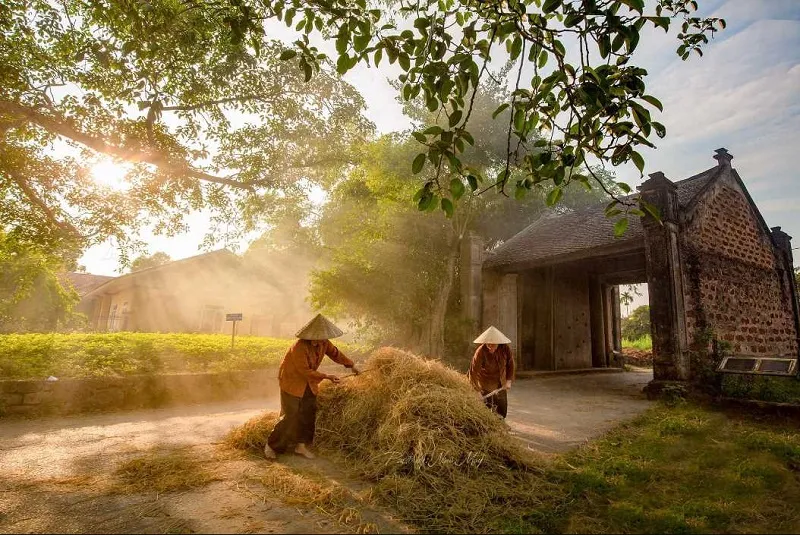
To get to Duong Lam ancient village, you can choose from the following transportation options:
- Bus: This is an economical and convenient public transport option. You can take bus number 71 or 73 from the center of Hanoi (at My Dinh, Kim Ma bus stations, etc.) to Son Tay bus station. From Son Tay bus station, you can take a motorbike taxi or taxi to Duong Lam ancient village (about 5km). Bus fares range from 9,000 – 12,000 VND/trip.
- Motorbike and private car: If you want to be proactive about time and schedule, a motorbike or private car is an ideal choice. You can travel along Thang Long Avenue, to the Hoa Lac intersection, turn right onto National Highway 21, go straight to Son Tay and follow the signs to Duong Lam ancient village. The route is quite easy and there are many beautiful landscapes along the way for you to admire.
- Coach: If you want more comfort and privacy, a coach is a good option. You can book a coach on the My Dinh – Phu Tho route and get off at Son Tay, then travel to the ancient village by motorbike taxi or taxi.
Arriving at Duong Lam, you will immediately feel the difference from the noisy and bustling city life. The space here is peaceful and quiet, with ancient laterite brick paths, mossy-roofed houses, and lush green trees. This place is not just a tourist destination, but also a living museum of architecture, culture, and history of the Northern Delta region.
Explore Must-See Attractions in Duong Lam Ancient Village
Duong Lam ancient village is like a peaceful rural painting, every corner containing unique cultural and historical values. Below are the highlights you should not miss when visiting Duong Lam:
1. Mong Phu Village Gate and Ancient Banyan Tree
Stepping into Duong Lam ancient village, the first thing that welcomes visitors is the majestic Mong Phu village gate, built in 1833. The village gate is made of laterite, a typical building material of this land, with an ancient and solid beauty. Right next to the village gate is a centuries-old banyan tree, casting a cool shade, creating an ideal check-in space for visitors. The banyan tree, village gate, and communal house courtyard are familiar images, symbols of the Vietnamese countryside, and in Duong Lam, these symbols are preserved and conserved in their entirety.

Walking around the village gate area, you will feel the fresh and peaceful atmosphere, completely different from the noise and bustle of the city. Small winding paths, paved with laterite bricks, lead deep into the village, opening up a completely different world.
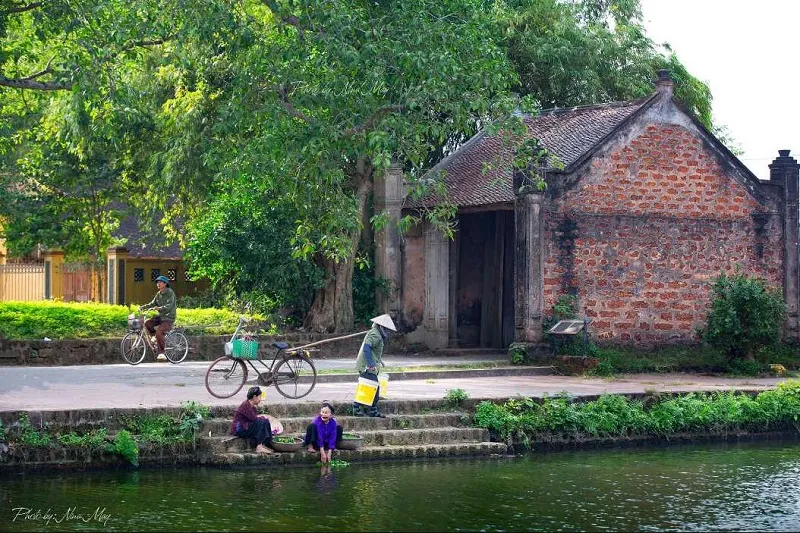
2. Ancient House of Ba Dien – A Place Keeping Memories of Time
The ancient house of Ba Dien is one of the most typical ancient houses in Duong Lam, dating back more than 200 years. The house bears the bold traditional architecture of Northern Vietnam, built of ironwood and laterite, with an ancient mossy tile roof. Stepping into Ba Dien’s house, you will feel a cozy and intimate space, with familiar household items of old Vietnamese families.

In particular, you will have the opportunity to meet and chat with Ba Dien, the owner of the house, a 93-year-old woman who is still very lucid and enthusiastic. She will tell you stories about the history of the house, about the ups and downs of the countryside, and about the traditional cultural values that her family always tries to preserve.
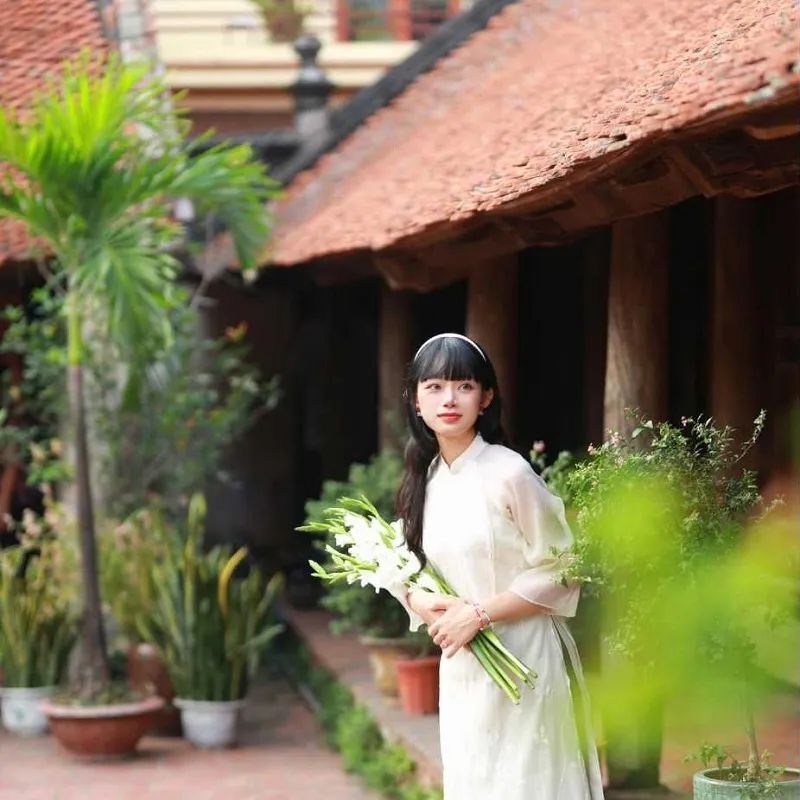
When visiting Ba Dien’s house, don’t forget to enjoy a cup of fragrant voi tea and a piece of sweet che lam, simple but flavorful countryside treats.
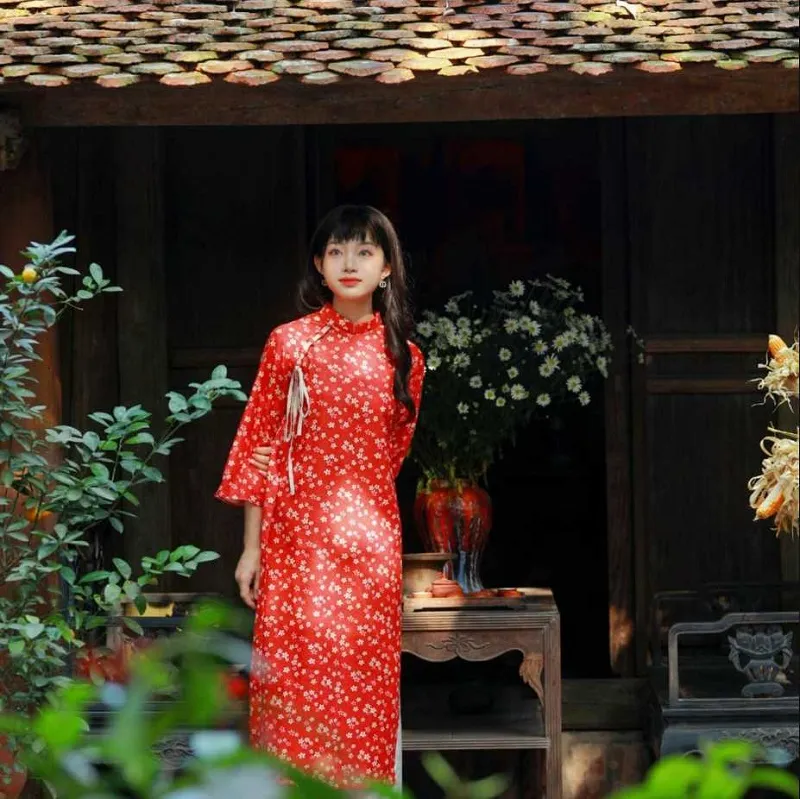
3. Mong Phu Communal House – Symbol of Spiritual Culture
Mong Phu communal house is the cultural and religious center of the village, where important festivals and community activities take place. The communal house was built nearly 400 years ago, bearing the bold Vietnamese-Muong architectural art, with a large area of up to 1800m2. The communal house gate is carved with sophisticated and meticulous patterns, showing the talent of ancient artisans. Inside the communal house, you will admire the stilt house architecture, earthen walls, and decorative motifs imbued with folk culture.
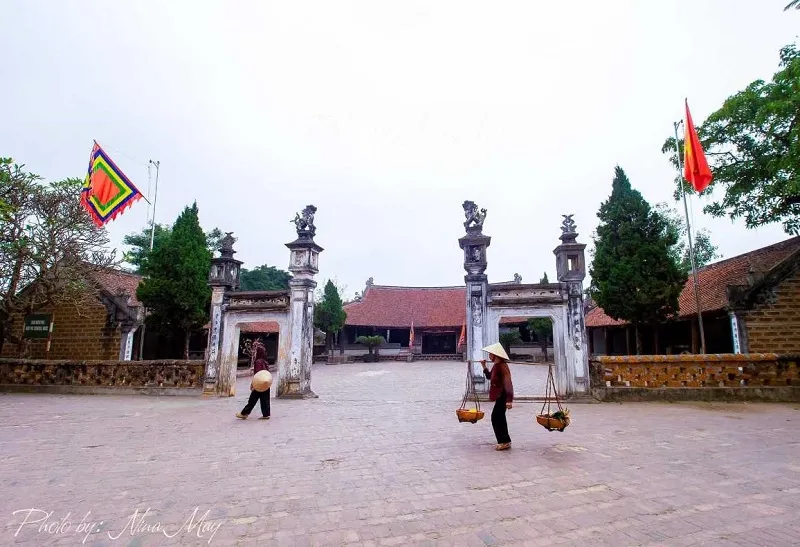
Mong Phu communal house is not only a beautiful architectural work, but also a place to preserve precious cultural and historical values of the village. When you come here, you will hear stories about Mr. Muc Hung, the talented master craftsman who made great contributions to building the communal house, and about the unique traditional festivals held at the communal house every year.
4. Ancient House of Mr. Hung – The Oldest House in Mong Phu Village
The ancient house of Mr. Hung is considered the oldest house in Mong Phu village, dating back nearly 400 years, built in 1649. The house has been inhabited by 12 generations, witnessing many changes in history and the countryside. A special feature of the house is the gate built of a unique material: sand, rice husk ash, mud, creating a durable bond over time.
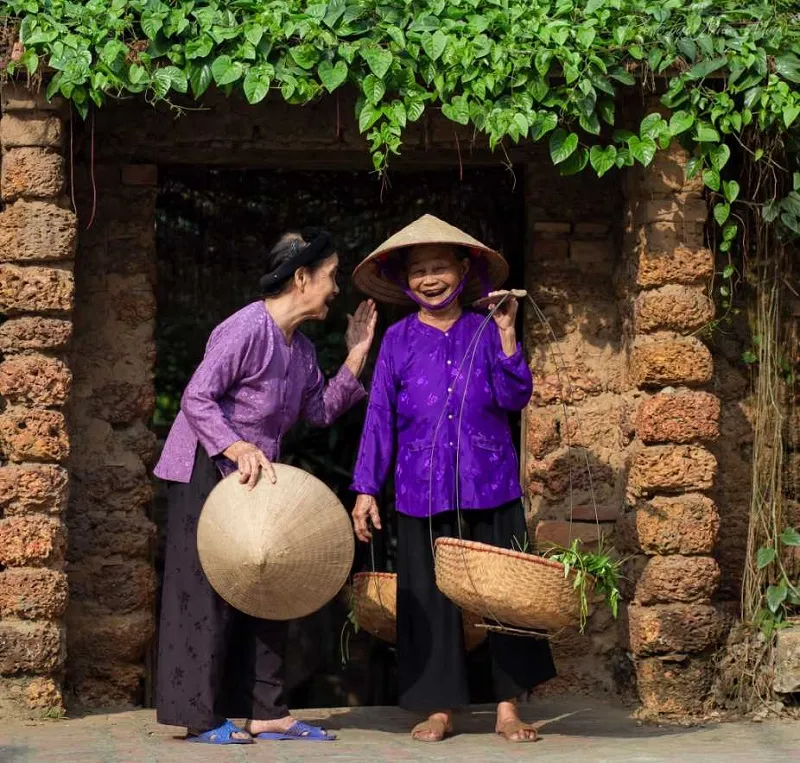
Stepping inside the house, you will see an ancient space with 5-compartment 2-lean-to architecture, of which the 3 middle compartments are used for ancestral worship, and the rest is for receiving guests. The courtyard is paved with Bat Trang bricks, an ancient well, all creating a nostalgic space, taking you back to the past.
5. Ancient House of Mr. The – Unique Nail-Less House
The ancient house of Mr. The is located in Xom Xui hamlet, Mong Phu village, famous for its unique “nail-less” architecture. The large 7-compartment house is connected entirely by mortise and tenon joints, in the traditional tiled roof style. This is a testament to the talent and skill of ancient carpenters, in creating a solid structure without the need for iron nails.
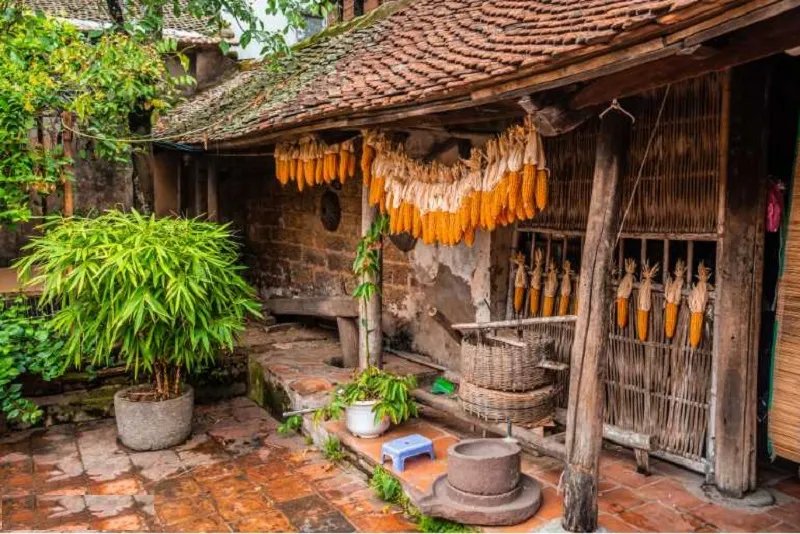
Visiting Mr. The’s house, you will not only admire the unique architecture, but also immerse yourself in the rustic living space, with rows of fragrant tuong (soybean paste) drying in front of the yard, corn cobs hanging on the porch, and local specialties such as tuong gao (rice-based soy sauce), and traditional sticky rice wine.
6. Duong Lam Ancient Village Cafe – Modern Touch in the Countryside
Wandering around the ancient village, you will come across small, pretty cafes, with a rustic and simple style, blending into the peaceful space of the countryside. Here, you can enjoy familiar drinks such as che lam, voi tea, coffee, and listen to stories about the village and local people.

In addition, you can visit Cafe Lang, a famous cafe in Duong Lam, with an old Northern Vietnamese style, with simple wooden tables and chairs, reminiscent of childhood memories. This is an ideal place for you to stop, relax, and feel the slow pace of life in the countryside.
Duong Lam Ancient Village Cuisine – Rich Countryside Flavors
Traveling to Duong Lam ancient village is not only a journey to discover culture and history, but also an opportunity for you to enjoy specialty dishes imbued with the flavors of the Northern Vietnamese countryside. Below are dishes you should not miss:
- Mia Chicken (Ga Mia): Ga Mia is a famous specialty of Duong Lam, with a small-legged chicken breed, golden feathers, firm, sweet, and fragrant meat. Boiled Ga Mia is a popular traditional dish, often used in festivals and worship ceremonies. Today, you can easily enjoy Ga Mia at restaurants and eateries in the village.
- Grilled Pork Roll (Thit Quay Don): Duong Lam grilled pork roll has a special flavor, different from other grilled pork dishes. The meat is marinated with special spices, including finely chopped guava leaves, creating a unique aroma. Grilled pork roll has a crispy skin, sweet and savory meat, delicious when served with hot rice or vermicelli.
- Sweet Green Bean Pudding (Che Kho): Che kho Duong Lam is made from cooked green beans, pureed, mixed with sugar and some other spices. Che kho has a mild sweet, nutty, and fragrant taste, a familiar rustic dish of the locals. Che kho is best when eaten cold, can be used as a dessert or snack.
- Rice-based Soy Sauce (Tuong Gao): Tuong gao is a traditional dipping sauce of Vietnam, and Duong Lam tuong gao has a particularly delicious and fragrant taste. Tuong is made from sticky rice, soybeans, salt, through a natural fermentation and aging process. Duong Lam tuong gao has a rich, smooth taste, often used to dip boiled vegetables, fried tofu, or as a seasoning for braising and cooking rustic dishes.
Detailed Duong Lam Ancient Village Travel Tips
To make your trip to Duong Lam ancient village complete and meaningful, please refer to the following useful tips:
1. Ideal Time to Visit
The best time to visit Duong Lam ancient village is in autumn (September to November) and spring (February to April). In autumn, the weather is cool and pleasant, the air is fresh, and the natural scenery is brilliant, very suitable for sightseeing and exploration. Spring is the festival season, you can combine a trip to Duong Lam with participating in unique traditional festivals.
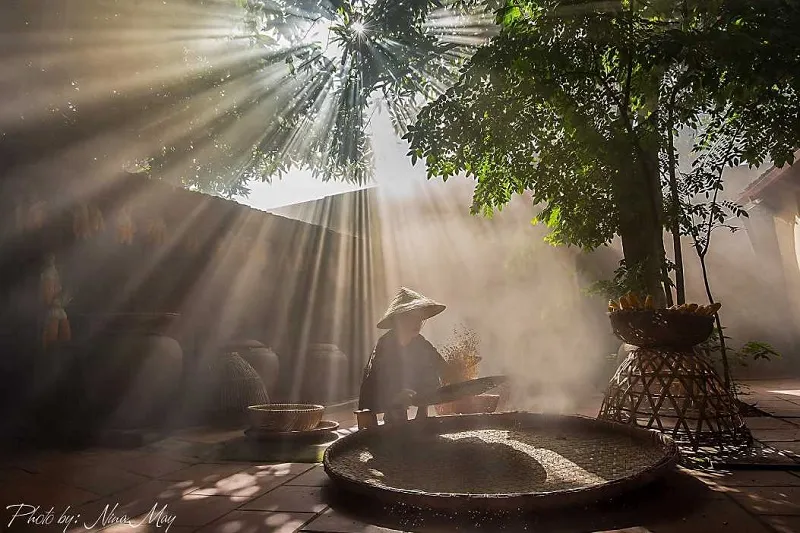
Avoid traveling to Duong Lam in the summer (May to August) because the weather is hot and humid, which can be uncomfortable when sightseeing outdoors. Winter (December to January) is cold, but if you like a quiet and peaceful atmosphere, you can still come to Duong Lam at this time.
2. Suggested Itinerary
You can spend one or two days exploring Duong Lam ancient village. If you go for a day trip, you can visit the main attractions such as Mong Phu village gate, Ba Dien’s ancient house, Mong Phu communal house, Mr. Hung’s ancient house, Mr. The’s ancient house, and enjoy local cuisine. If you have two days, you can go deeper into exploring the alleys and paths in the village, learn about the cultural life of the people, and experience activities such as cycling around the village, participating in che lam, tuong gao making classes, or staying overnight at a homestay in the village to fully feel the peaceful atmosphere here.
3. Other Notes
- Entrance fee: 20,000 VND/person. Parking fee: 10,000 VND/motorbike. Bicycle rental: 30,000 – 50,000 VND/bike.
- Dress code: You should choose comfortable and polite clothes, suitable for the cultural and historical space of the ancient village. If you want to take beautiful photos, you can bring ao dai, yem (Vietnamese bodice), or traditional costumes.
- Accommodation: If you want to experience the peaceful space of the ancient village at night, you can choose to stay at homestays in the village. You should book in advance, especially during peak tourist season.
- Respect local culture: When visiting the ancient village, please maintain general hygiene, do not arbitrarily break branches or pick flowers, do not make noise or disturb order, and respect the customs and habits of local people.
Conclusion
Duong Lam ancient village is not only an attractive tourist destination, but also a treasure of precious cultural and historical values of the nation. Coming to Duong Lam, you will not only admire the beauty of ancient architecture, enjoy unique cuisine, but also slow down, return to traditional values, and feel the soul of the Vietnamese countryside. Take a trip to Duong Lam ancient village to experience the wonderful things this place has to offer, and surely, memories of this trip will linger in your heart.
This article is compiled and edited by the Du Lich khap the gioi team, bringing useful information and unique travel experiences.